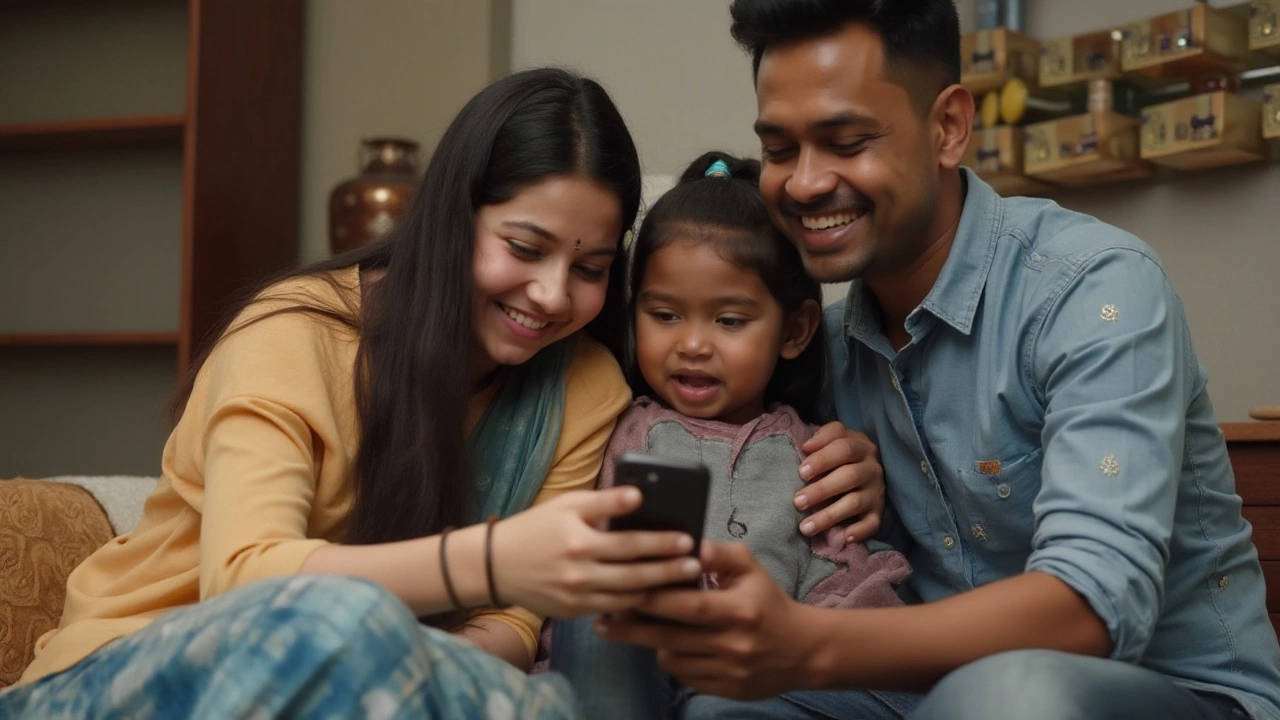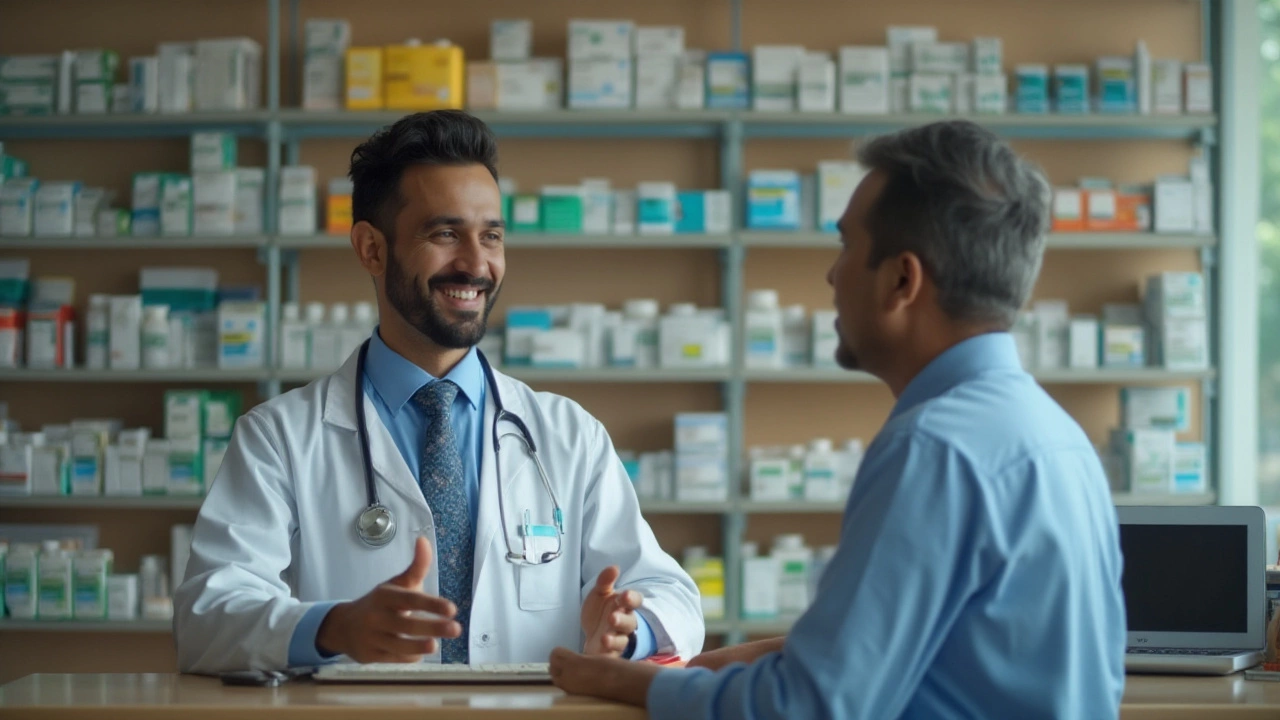
- Jan, 16 2025
- 0
In the age of digital convenience, mail-order pharmacies seem like a great option. They promise to simplify the way we receive essential medications, delivering them straight to our doors without the hassle of making a trip to a brick-and-mortar pharmacy. But before you make the switch, it's crucial to weigh the potential downsides.
Imagine waiting anxiously for a package that never arrives on time. Or not being able to pop into the pharmacy for a quick chat with your trusted pharmacist. Then, there are concerns about privacy and securely handling sensitive prescription information. While mail-order services offer undeniable benefits, understanding these challenges ensures you're better prepared to address them.
Let's dive deeper into the nuanced world of mail-order pharmacies, exploring the hiccups and hurdles you might face. After all, when it comes to our health, being informed is truly half the battle won.
- Convenience Versus Delays
- The Missing Personal Touch
- Handling Emergencies and Urgent Needs
- Security and Privacy Concerns
- Managing Medication Errors
Convenience Versus Delays
In today's fast-paced world, the appeal of a mail-order pharmacy is undeniable. Imagine the luxury of receiving medications without leaving your home, saving countless hours that could be spent on more pressing commitments or cherished moments with family. This convenience is particularly beneficial for those with mobility issues or individuals living in remote areas with limited access to physical pharmacies. It's no surprise that the inclination toward mail-order services has grown, with many households now regarding it as a part of their healthcare routine.
However, this convenience has a flip side that often catches many by surprise: delivery delays. While local pharmacies provide an immediate solution with a simple walk-in, online prescription services rely heavily on the logistics chain. Factors such as weather disruptions, local postal service inefficiencies, or unforeseen demand spikes can significantly derail the expected delivery timeframe, leaving patients without their essential medications.
Statistics suggest that nearly 21% of users of mail-order services have experienced delays, according to a survey conducted by the American Pharmacists Association. Such delays can escalate into serious health risks for patients dependent on regular medication schedules, potentially leading to lapses in treatment adherence. As Dr. Geraldine Jones, a prominent healthcare expert, states,
"The disconnect between a patient's needs and the unpredictable nature of delivery schedules can impose unintended stressors, especially for chronic disease patients."
Moreover, the indirect nature of resolving such issues can add to the frustration. Patients often find themselves entangled in lengthy customer service calls or sending numerous emails, barely making a dent in the situation. The anticipation of a chronic medication arriving late can result in a scramble to procure the same medication locally, usually at a premium price. This juxtaposition of saving time and eventual urgent local purchases somewhat dampens the utopian promise of convenience.
Consequently, it is essential for customers to evaluate their options based on their specific healthcare needs. Patients who require critical medication at very regular intervals should carefully consider whether they can afford the occasional hiccup that a mail-order pharmacy might present. For many, maintaining a backup plan through a local pharmacy could strike the right balance between convenience and reliability. Understanding the playing field can ensure health isn't inadvertently compromised in pursuit of ease.
The Missing Personal Touch
One of the main criticisms of the mail-order pharmacy is the erosion of personal interaction that traditional pharmacies offer. When you step into a local pharmacy, there's a palpable human element involved. You greet the pharmacist, ask questions directly, and receive immediate, personalized responses. This interaction allows pharmacists to catch potential medication errors, provide advice on possible side effects, and suggest over-the-counter solutions that might complement prescribed treatments. It's a nuanced relationship built on trust and knowledge, thriving in a face-to-face setting.
In contrast, with mail-order pharmacies, the absence of this direct dialogue can lead to a feeling of detachment. Should you have a pressing question about your medication or if something feels amiss, reaching customer service can sometimes feel like navigating a bureaucratic maze. Hold times on the phone or impersonal email exchanges cannot substitute the assurance of speaking directly to someone who knows your medical history and personal concerns.
The Role of Personal Advice
For patients managing chronic conditions, this advice isn’t just a convenience; it's a necessity. For instance, if you're taking medication for diabetes, a quick consultation about diet and drug interactions could prevent adverse reactions. A study conducted by the American Pharmacists Association revealed that patients who regularly consulted their pharmacists had better health outcomes than those who didn't. When using an online prescription service, these critical touchpoints can be easily overlooked.Moreover, there's the subtle but significant aspect of personal rapport. Many people find comfort in the consistency of pharmacists who know them by name, understand their anxieties, and offer a sense of community. This connection becomes even more crucial for older adults, for whom frequent interactions with health professionals are part of maintaining their well-being. According to a survey by Pharmacy Times, 67% of seniors appreciate their pharmacist's role in their healthcare team, underscoring how vital the personal touch is.
"Patients often rely on personal interactions with pharmacists to guide their medication adherence and gain peace of mind in their treatment plans," says Dr. Emily Thompson, a seasoned healthcare analyst. "The disappearance of this interaction with mail-order services can have far-reaching effects on patient satisfaction and health outcomes."
Additionally, while mail-order services offer convenience, they're often not equipped to manage emergency situations quickly. Imagine discovering you've run out of medication and the replacement is in transit, or worse—unavailable. Such scenarios underscore the advantage of physical pharmacies where a swift trip can resolve such emergencies. Virtual pharmacies, while valuable and efficient in many ways, struggle to replicate this kind of immediate responsiveness.
Therefore, while stepping into the world of online medication delivery, acknowledging the trade-offs is crucial. The idea isn't to forsake one for the other but rather to understand the implications fully and decide based on one's personal needs and lifestyle. Balancing the convenience of online prescription services with occasional visits to your local pharmacy might straddle the line perfectly.

Handling Emergencies and Urgent Needs
One of the most significant drawbacks of relying on a mail-order pharmacy arises when an unexpected medical situation crops up. Imagine a health emergency at an odd hour, needing immediate medication. In such scenarios, waiting for the delivery from an online service might not be feasible. While traditional pharmacies offer direct access where you can quickly obtain necessary prescriptions, the same cannot be said for their mail-order counterparts, no matter how efficient their logistics may be.
Mail-order pharmacies depend on carriers and delivery schedules, and this delivery chain can get disrupted due to various factors like weather conditions, holidays, and even operational delays. People living in remote areas might face extended waiting times, which complicates their ability to receive medications promptly compared to those in urban centers. A simple flight delay can result in medication arriving days later than expected, posing serious health risks to those in need of timely treatment.
In case of an immediate need for medication adjustment—perhaps due to an allergic reaction or dosage change—having direct contact can be crucial. A community pharmacist can quickly liaise with your healthcare provider to ensure you get what you need without additional delays. Unfortunately, mail-order services lack this immediate corrective ability, highlighting a gap in addressing urgent healthcare demands.
"While mail-order pharmacies certainly serve a purpose, they struggle with immediacy, which can be critical in healthcare," states Dr. Emily Jensen, a well-respected pharmacist.
Furthermore, medications that require careful handling—such as those needing refrigeration or quick administration—might not be ideal candidates for mail-order. These medications risk spoilage during transit if not handled correctly, creating another obstacle for patients needing swift access to their prescriptions.
Several mail-order pharmacies have started offering express shipping options. Still, the added cost might not be sustainable for all patients, especially those requiring frequent medication deliveries. Patients need to weigh the advantages of convenience against the potential risks and costs associated with delayed access to essential prescriptions. Recognizing these limitations, some prefer to rely on hybrid models, using both traditional and mail-order pharmacies to balance their healthcare needs.
| Delivery Method | Response Time |
|---|---|
| Traditional Pharmacy | Immediate |
| Mail-Order Pharmacy | 1-7 Days |
Security and Privacy Concerns
When you order medications through a mail-order pharmacy, security and privacy become significant talking points. These services require the exchange of sensitive personal and medical information, making it critical to understand the potential risks involved. An alarming reality is that your medical data could become vulnerable to breaches, exposing your health history and possibly even your financial information. The digital nature of these transactions means that private details could be intercepted if proper security protocols aren't in place.
It's vital to ensure that any online prescription service you use has robust encryption measures. Always look for platforms that comply with regulations like HIPAA in the United States, which are designed to protect patient information. Despite regulations, incidents do occur. According to research in a 2023 healthcare report, there was a 30% rise in data breaches linked to healthcare services, an unsettling figure for anyone relying on mail-order pharmacies.
Such statistics showcase the precarious nature of entrusting sensitive medical information to digital platforms. One way to mitigate this risk is to research and select a reputable pharmacy that prioritizes customer data protection. But, even with stringent measures, no system is immune to cyberattacks. In a world where you can do much online, a question arises – is the convenience worth the potential security trade-offs?
Noted cybersecurity expert, Dr. Laura Dawson, emphasizes, "Healthcare organizations, including mail-order pharmacies, must constantly innovate their security protocols to meet the empowerment of cyber threats. Patients must demand transparency in security practices for their peace of mind."
These privacy concerns extend beyond personal information. What happens if your medications are lost or delivered improperly? Not only could your health suffer if your medication falls into the wrong hands, but the journey of your medication package also exposes it to potential tampering. It's crucial to ensure your mail-order pharmacy has measures to verify delivery status securely. Some pharmacies offer tamper-proof packaging to maintain medication integrity during transit, a golden standard other services should aspire to.
Furthermore, be vigilant upon receiving your medication deliveries. Check the condition of the medications and verify them against your prescription details. If there's ever doubt or a discrepancy, contact the pharmacy without delay. Being proactive can safeguard not only your health but also protect your sensitive data from unauthorized eyes, giving you assurance in the digital age.

Managing Medication Errors
In the realm of mail-order pharmacy services, medication errors present a significant challenge that users must be acutely aware of. Unlike traditional pharmacies where pharmacists can catch and fix errors immediately during the dispensing process, mail-order services typically involve a longer chain of custody which increases the risk of potential discrepancies. Imagine receiving a parcel, only to find discrepancies in dosage or even entirely incorrect medications. Such errors can have serious implications on one's health, underscoring the importance of vigilance when using these services.
One key aspect contributing to this issue is the absence of face-to-face interactions with pharmacists who traditionally play a vital role in verifying prescriptions and clarifying any uncertainties. While mail-order pharmacies employ pharmacists, the inability to directly communicate can widen the margin for error. This lack of immediate human oversight underscores why understanding and preventing errors becomes doubly significant when opting for online prescription services.
Moreover, research reveals that communication gaps often arise in online pharmacy transactions. A study conducted by the National Institute of Health indicated that 20% of patients using mail-order services reported medication discrepancies during a year's time. A medication delivery error can range from receiving the wrong drug to the incorrect amount, dosage, or even missing prescriptions. These findings highlight the frequency and potential impact of errors, creating a strong case for implementing comprehensive check protocols for users of mail-order pharmacies.
"Effective systems are needed to both recognize and rectify errors before patients are adversely affected," noted Dr. Laura Smith, a renowned pharmacologist. "Ensuring that patients are empowered with information on their prescriptions is a crucial step in safeguarding their health."
To help mitigate these risks, many mail-order services have introduced sophisticated software and verification systems aimed at reducing human error. Some utilize advanced barcode technology and multi-tier verification steps where pharmacists check prescriptions virtually through secure platforms. This can ensure that the medications dispatched align perfectly with the physician's instructions, thus reducing the possibility of mistakes.
As a consumer, there are proactive steps one can adopt to manage such risks better. Begin by double-checking each prescription before placing an order online. It's wise to maintain open communication lines with the mail-order pharmacy's support team, raising questions or concerns without hesitation. A systematic personal record of medication schedules and prescriptions can also act as an additional safety net. Moreover, familiarize yourself with the pharmacy's policies on correcting errors, as leading services often offer a swift, simple process for resolving issues.
With the 'convenience' of modern medication delivery systems, users must balance ease of access with safety. Staying informed and engaged with the process can vastly enhance the reliability of these services. This ensures that medication errors remain an avoidable hiccup in the journey to health and wellness, rather than an inevitability.
Nikhil Verma
I'm a dedicated physician with a passion for exploring the intricacies of medicine, focusing on the unique healthcare challenges in India. I spend much of my spare time writing articles aimed at improving public understanding of health issues. Balancing my clinical practice and writing allows me to reach a wider audience, sharing insights and fostering a deeper appreciation for medical advancements. I derive immense satisfaction from both treating patients and engaging with readers through my writing.